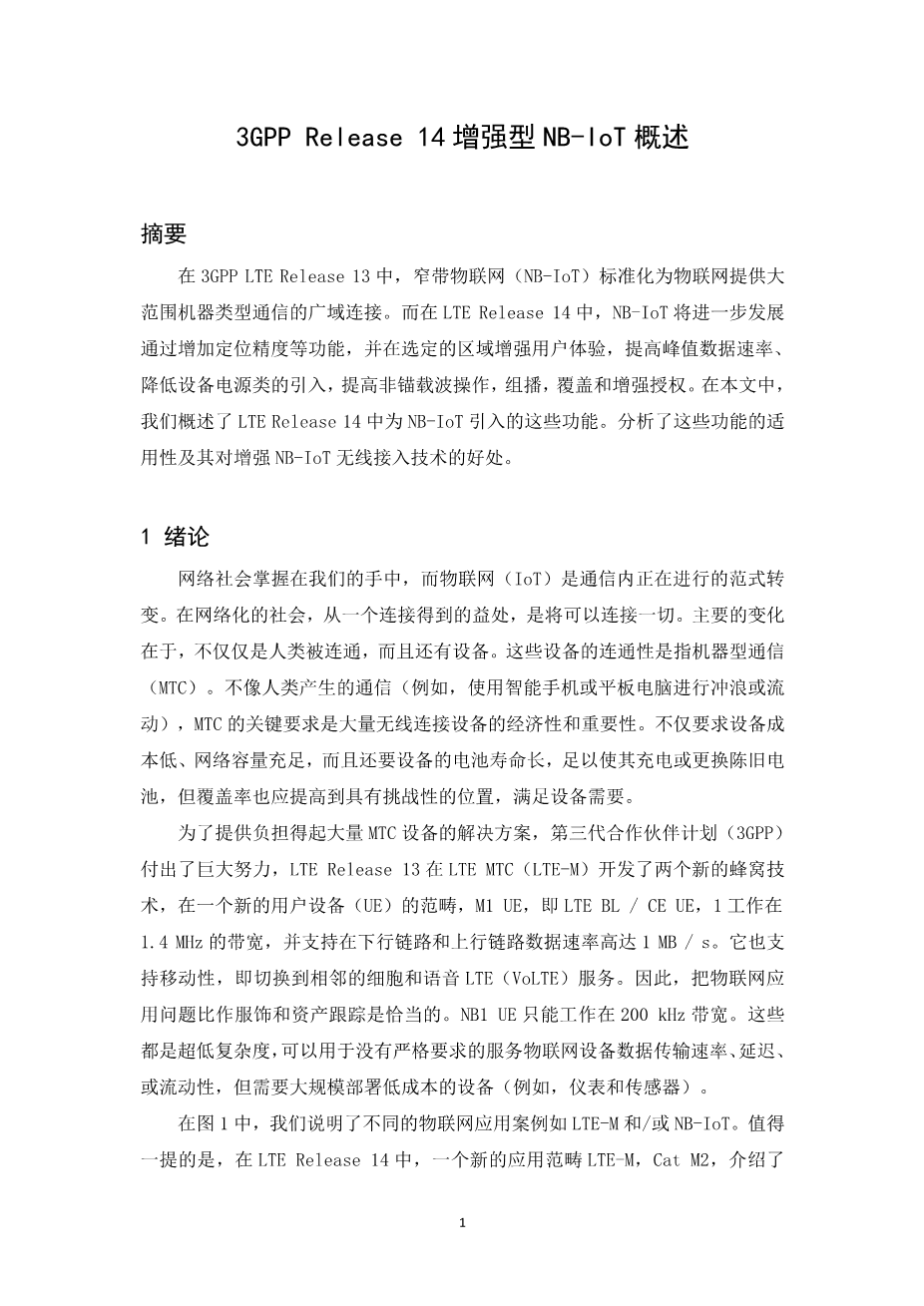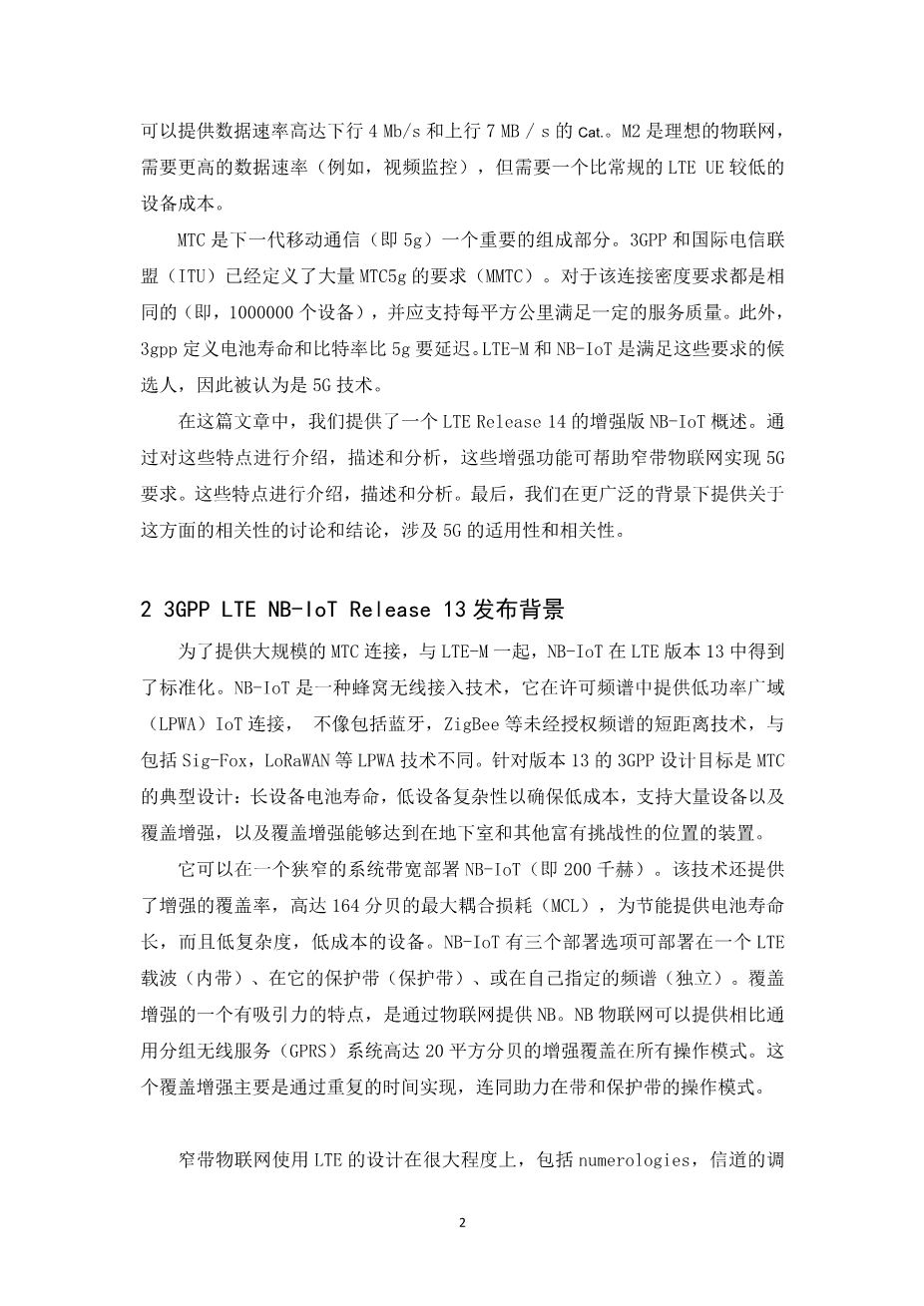MASSIVE MACHINE TYPE COMMUNICATIONS
Overview of 3GPP Release 14 Enhanced NB-IoT
Andreas Houml;glund, Xingqin Lin, Olof Liberg, Ali Behravan, Emre A. Yavuz, Martin Van Der Zee, Yutao Sui, Tuomas Tirronen, Antti Ratilainen, and David Eriksson
The authors are with Ericsson AB, Oy LM Ericsson AB.
- BL stands for bandwidth-re-duced low-complexity, and CE stands for coverage enhancement.
Digital Object Identifier:
10.1109/MNET.2017.1700082
Abstract
In 3GPP LTE Release 13, Narrowband Internet of Things (NB-IoT) was standardized for providing wide-area connectivity for massive machine-type communications for IoT. In LTE Release 14, NB-IoT was further developed to deliver enhanced user experience in selected areas through the addition of features such as increased positioning accuracy, increased peak data rates, the introduction of a lower device power class, improved non-anchor carrier operation, multicast, and authorization of coverage enhancements. In this article, we pro-vide an overview of these features introduced for NB -IoT in LTE Release 14. An analysis is given on the applicability of these features and their benefits to enhance the NB-IoT radio access technology.
Introduction
The networked society is at our hands, and the Internet of Things (IoT) is the ongoing paradigm shift within communications. In the networked society, everything that benefits from a connec-tion can be and will be connected. The major change lies in that not only people will be con-nected, but also devices. The connectivity for these devices is referred to as machine -type com-munication (MTC) [1]. Unlike human generated communication (e.g., surfing or streaming using smartphones or tablets), the key requirement for MTC is the importance of enabling economical wireless connectivity for massive numbers of devices. Examples of different IoT applications are given in Fig. 1. Not only must the cost of the devices be low, the network capacity be sufficient, and the device battery life be long enough to make charging or battery replacement obsolete, but coverage should also be improved to reach devices in challenging locations [1].
To provide affordable solutions for massive numbers of MTC devices, the Third Generation Partnership Project (3GPP) dedicated an immense effort during LTE Release 13 to develop two new cellular technologies: LTE -MTC (LTE-M), where a new user equipment (UE) category, Cat. M1, was introduced, and Narrowband IoT (NB- IoT) where UE category Cat. NB1 was introduced. A Cat. M1 UE, a.k.a. an LTE BL/CE UE,1 operates in 1.4 MHz bandwidth, and supports a data rate up to 1 Mb/s in both downlink and uplink. It also has support for mobility, that is, handover to neighboring cells, and voice over LTE (VoLTE) service. Therefore, Cat. M1 UEs are suitable for IoT applications such as wearables and asset tracking. A Cat. NB1 UE operates only in 200 kHz bandwidth. These are IoT devices with ultra -low complexity that can be used for services that have no strict requirements
for data rate, latency, or mobility, but require mas-sive deployment of low-cost devices (e.g., meters and sensors).
In Fig. 1, we illustrate different IoT use cases that are suitable for the use of LTE-M and/or NB -IoT. It is worth mentioning that in LTE Release 14 [2], a new category of LTE-M UEs, Cat. M2, was introduced that can provide data rates up to 4 Mb/s in downlink and 7 Mb/s in uplink. Cat. M2 UEs are desired for IoT applications that need higher data rate (e.g., video surveillance), but require a lower device cost compared to regular LTE UEs.
MTC is an important component of next (fifth) generation mobile telecommunications (a.k.a. 5G). Both 3GPP and the International Telecom-munication Union (ITU) have defined 5G require-ments for massive MTC (mMTC). The requirement for mMTC connection density is the same in both cases (i.e., 1,000,000 devices) fulfilling certain quality of service, and should be supported per square kilometer. In addition, 3GPP defines 5G requirements for battery life, latency, and bit rate. Both LTE-M and NB-IoT are candidates for fulfilling these requirements and thus to be considered as 5G technologies [3, 4].
In this article, we provide an overview of the enhancements made for NB-IoT in LTE Release 14. Some of these enhancements may help NB-IoT toward fulfilling the 5G requirements. These features are introduced, described, and analyzed. Before that, the background of Release 13 NB-IoT is given. Finally, we provide discussion and conclusions on the relevance of this in a wider context, related to both the applicability and the relevance for 5G.
3GPP LTE NB-IoT Release 13 Background
To provide massive MTC connectivity, togeth-er with LTE-M, NB-IoT was standardized in LTE Release 13. NB -IoT is a cellular radio access technology that provides low-power wide-area (LPWA) IoT connectivity in licensed spectrum, unlike short-range technologies in unlicensed spectrum, including Bluetooth, ZigBee, and so on, and unlike LPWA technologies including Sig-Fox, LoRaWAN, and so on. The 3GPP design tar-gets for Release 13 were those typical for MTC: long device battery life, low device complexity to ensure low cost, support for massive numbers of devices, and coverage enhancements to be able to reach devices in basements and other challeng-ing locations.
It is possible to deploy NB-IoT in a narrow sys-tem bandwidth (i.e., 200 kHz). The technology also provides enhanced coverage, up to 164 dB maximum coupling loss (MCL), is energy-efficient to provide long battery life, and is of low com-
16 0890-8044/17/$25.00 copy; 2017 IEEE IEEE Network bull; November/December 2017
plexity to enable low-cost devices [5]. NB-IoT has three deployment options and can be deployed either inside an LTE carrier (in -band), in the guard band of it (guard bandlt;
全文共40571字,剩余内容已隐藏,支付完成后下载完整资料


英语原文共 15 页,剩余内容已隐藏,支付完成后下载完整资料
资料编号:[12005],资料为PDF文档或Word文档,PDF文档可免费转换为Word


